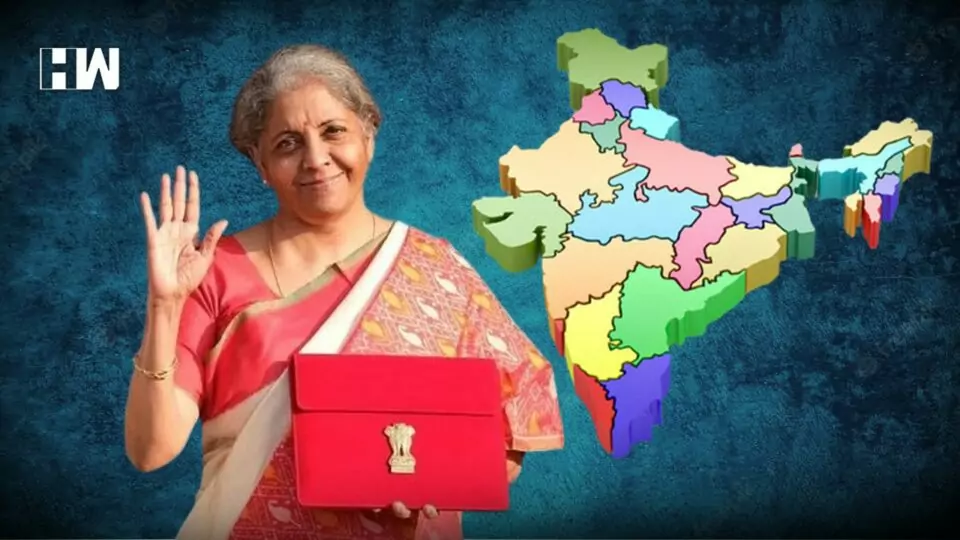The Union Budget is a list of 13 documents and some documents are explanatory notes that add narrative support to the mandated documents so that they can be quickly or contextually referred to
New Delhi: Every year on February 1, the Union Budget of India is announced. The Fiscal Responsibility and Budget Management (FRBM) Act, 2003 is the most important one for the Union Budget. From the Budget, the nation learns about the government’s estimated revenues and expenditures for a particular financial year. Now let us know more about why India’s Budget is called as ‘Union Budget’ and what role does FRBM Act plays in Union Budget.
Why Is India’s Budget Termed As “Union Budget?”
The government’s expected revenues and expenses for a specific fiscal year are stated in the union budget. Now, India is a nation that is a ‘Union of States,’ and hence India’s Budget is known as the “Union Budget.” In Article 112 of the Indian Constitution, Union Budget is referred as the Annual Financial Statement.
Additionally, in accordance with Article 112, the government is required to transmit the Budget to Parliament prior to the beginning of a financial year. Due to this, the budget is presented on the first day of February, allowing adequate time to discuss and vote.
The Budget consists of two parts – Revenue Budget and Capital Budget.
Why Is FRBM Act Important In Budget?
The Budget is not a single document. It is a list of 13 documents. Now 3 of the 13 – Annual Financial Statement (AFS), Demands for Grants (DG), and the Finance Bill – are mandated by Articles 112, 113, and 110(a) of the Constitution.
Some documents are explanatory notes that add narrative support to the mandated documents so that they can be quickly or contextually referred to.
Apart from this, there are other two important documents that are a 21st Century addition to the Budget:
- Macro-Economic Framework Statement
- Medium-Term Fiscal Policy cum Fiscal Policy Strategy Statement
These two come under Fiscal Responsibility and Budget Management (FRBM) Act, 2003. These documents majorly look at the nation’s economy.
The FRBM Act was enacted to help the Centre adhere to the path of fiscal consolidation, which refers to concrete policies for reducing government deficits and debt accumulation.
On July 5, 2004, the act was brought into action. Through this act, the Centre has to mandate to limit the fiscal deficit up to three percent of Gross Domestic Product (GDP) by March 31, 2021. Under this act, the Centre has to limit the General Government Debt to 60 percent of the GDP and the Centre’s Debt to 40 percent of GDP, by March 31, 2025.
The three percent aim, however, has never been achieved by the national government. The Maastricht Treaty, which prohibited yearly budget deficits from exceeding 3% of GDP, is said to have served as the model for the 3% fiscal deficit cap. However, many European countries have also failed to adhere to the ceiling.
Also Read: What To Expect Of Budget 2023?
Macro-Economic Framework Statement
The Macro-Economic Framework Statement evaluates the prospects for GDP growth, the domestic economy, and the external sector’s stability. It also examines the Centre’s fiscal balance, which calculates the gap between overall government spending and revenue. In the modern world, this balance can more frequently be negative, resulting in a fiscal deficit.
India’s fiscal deficit was at 6.8 percent of GDP in 2021-22. According to last year’s data, the total expenditure in Budget Estimate (BE) 2021-22 approximately rose by one percent over the Revised Estimate 2020-21.
The 2022 statement tabled by Finance Minister Nirmala Sitharaman emphasized that the Fiscal deficit of the Central Government from April to November 2021 stood at 46.2 percent of the BE, much lower compared to 135.1 percent during the same period in 2020-21 and 114.8 percent during the same period in 2019-20.
Medium-Term Fiscal Policy cum Fiscal Policy Strategy Statement
The other document, Medium-Term Fiscal Policy cum Fiscal Policy Strategy Statement cum Fiscal Policy Strategy Statement sets the three-year rolling targets for specific fiscal indicators, The specific indicators are as follows:
- Fiscal Deficit.
- Revenue Deficit.
- Primary Deficit.
- Tax Revenue.
- Non-tax Revenue.
- Central Government Debt.
Additionally, it demonstrates how the current fiscal policies adhere to good fiscal management principles and provides justification for any significant departure from important fiscal benchmarks. For instance, the Covid-19 epidemic resulted in spending at hitherto unheard-of amounts, increasing the fiscal deficit.
“Notwithstanding the uncertainty and challenges posed by the pandemic, the Central Government has demonstrated commitment to credible fiscal consolidation in its Budget of FY 2021-22 and FY 2022- 23… As a result, the Indian economy is expected to return to a more stable growth trajectory over the medium term,” the document read.
As an independent media platform, we do not take advertisements from governments and corporate houses. It is you, our readers, who have supported us on our journey to do honest and unbiased journalism. Please contribute, so that we can continue to do the same in future.

